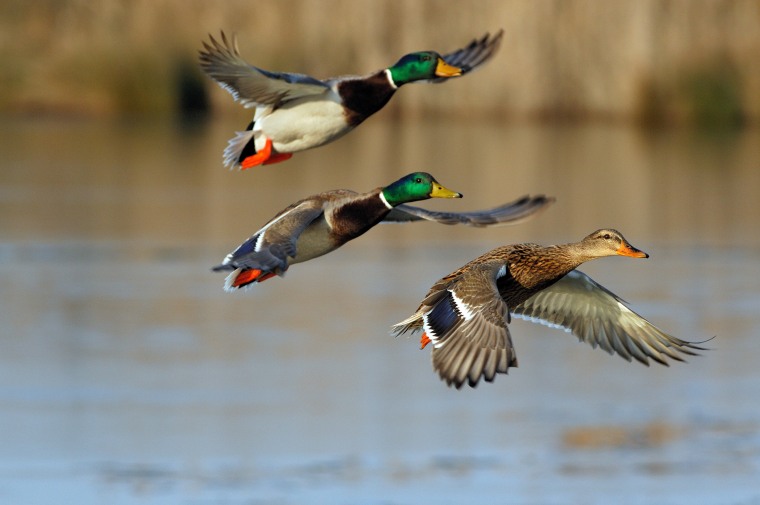Wildlife artists are conflicted over a new rule included in this year's Federal Migratory Bird Hunting and Conservation Stamp (Duck Stamp) Contest, which requires participants to include hunting imagery.
Artists who submitted artwork for the stamp included shotgun shells, duck calls and decoys, among other items, to contend with the new rule, which the Trump administration added to the regulations in May, according to the U.S. Fish and Wildlife Service.
The contest for the stamp, which is a hunting permit and not a postage stamp, was judged last month.
Richard Clifton, a wildlife artist who won the competition, said that he understands why artists are concerned that the rule could affect their creative vision but that he also understands wanting to appeal to hunters, who are the primary purchasers of the permit.
"For me, personally, I just didn't feel why it was necessary to make a specific mandated theme when, for all along, if you've ever wanted to do it, you could've just done it anyway," Clifton said.
Clifton said he'd rather the competition just be a duck stamp contest in which competitors are judged by their best ducks.
"I would prefer that, but I can deal — because I'm also a hunter and a waterfowl hunter — so I can deal with the change, but I don't know why the powers that be felt it was necessary," he said.
One artist told Audubon Magazine that she was concerned that seeing shotgun shells and other items in the water would portray a bad message about hunters.
"That looks to me like litter, and a lot of people said the same thing," the woman, Rebekah Knight, a Missouri wildlife artist who entered the contest, told Audubon. "It's just not good for trying to get the correct message across for people who don't know anything about hunting."
Other artists told the magazine that the items in the water were reminders to hunters that they must pick up after themselves.
Jim Hautman, a wildlife artist who entered the contest, said he also understands why nonhunters could be concerned by seeing images of hunting items in the water.
"I could see as a nonhunter why that would really bug you to see an empty shotgun shell lying around. I don't think that's the best way to showcase our sport. I mean, as a hunter, it doesn't really bother me, but I guess it depends who they're trying to reach," he said, adding that hunters often try to pick up their spent shells but sometimes can't find them all.
The rule change was meant to celebrate "our waterfowl hunting heritage," according to the Fish and Wildlife Service, and the theme will be mandatory from now on.
"The nation's rich natural resources have been protected in perpetuity, largely because of hunters and their contributions through various revenue programs, including the Federal Duck Stamp," a U.S. Fish and Wildlife Service spokesperson said in an email. "The intent of the recent Duck Stamp regulation is to honor the history, culture, and conservation efforts founded by hunters and what they have provided to all Americans."
Each year, 1.5 million stamps are sold and, as of 2019, the Federal Duck Stamps have generated more than $1.1 billion to preserve more than 6 million acres of waterfowl habitat, the spokesperson said. On its website, the Fish and Wildlife Service describes the duck stamp as "among the most successful conservation tools ever created to protect habitats for birds and other wildlife."
Clifton said that in recent years, waterfowl hunters have pushed to buy more than one stamp to put more money into conservation.
"That's a good thing, and I could see where maybe somebody thinks that since it's waterfowl hunters, let's appease them by putting images on the stamp that reflect what they do. But personally, as a waterfowl hunter, I don't need to see that on the stamp to want to support conservation," Clifton said.
Although the stamp is for hunters, they aren't the only ones who buy it. Birders and nonhunters also buy the stamp to support conservation, according to Audubon.
"Do you run the risk of alienating bird-watchers or outdoor enthusiasts who maybe aren't hunters but started coming around to buying the duck stamp? Now, with this new rule change, are you running the risk of alienating people who you had just brought on board?" Clifton asked.
Hautman said that if nonhunters know where the money for the stamps is going — to preserve wildlife habitat — they likely won't be deterred by the new theme.
"Any controversy or anything, I think, is good, because once someone looks into the duck stamp program, they'll see it really is one of the great government programs," he said.


